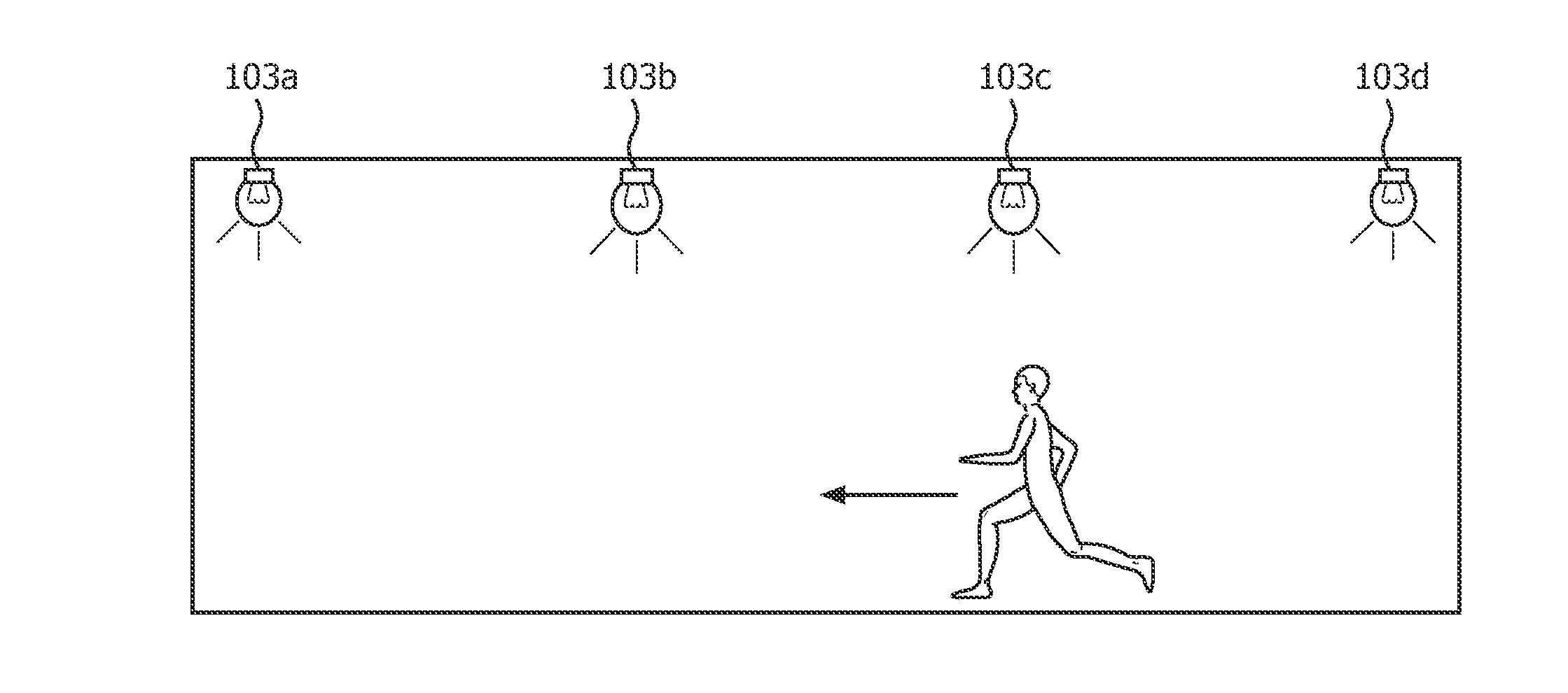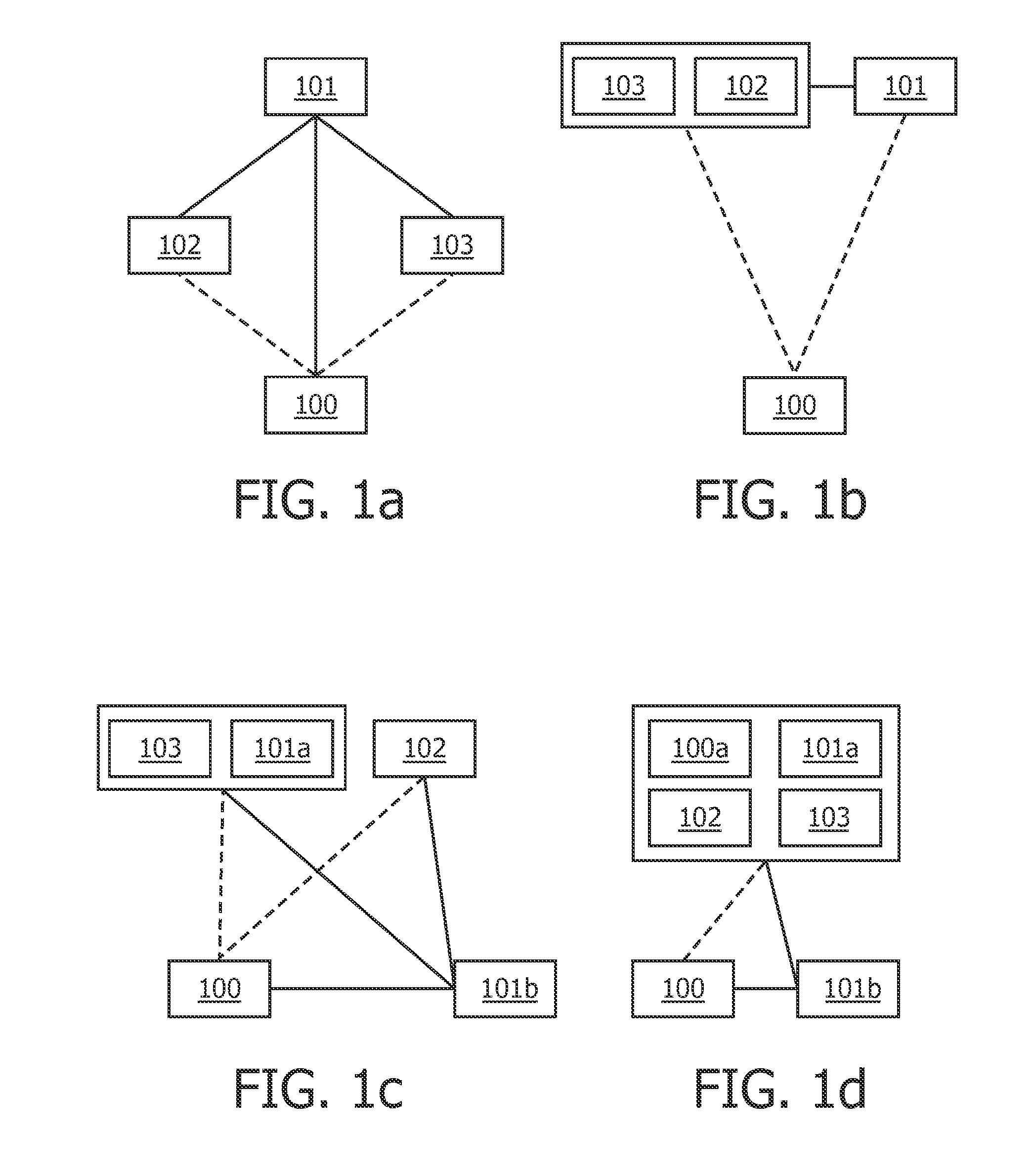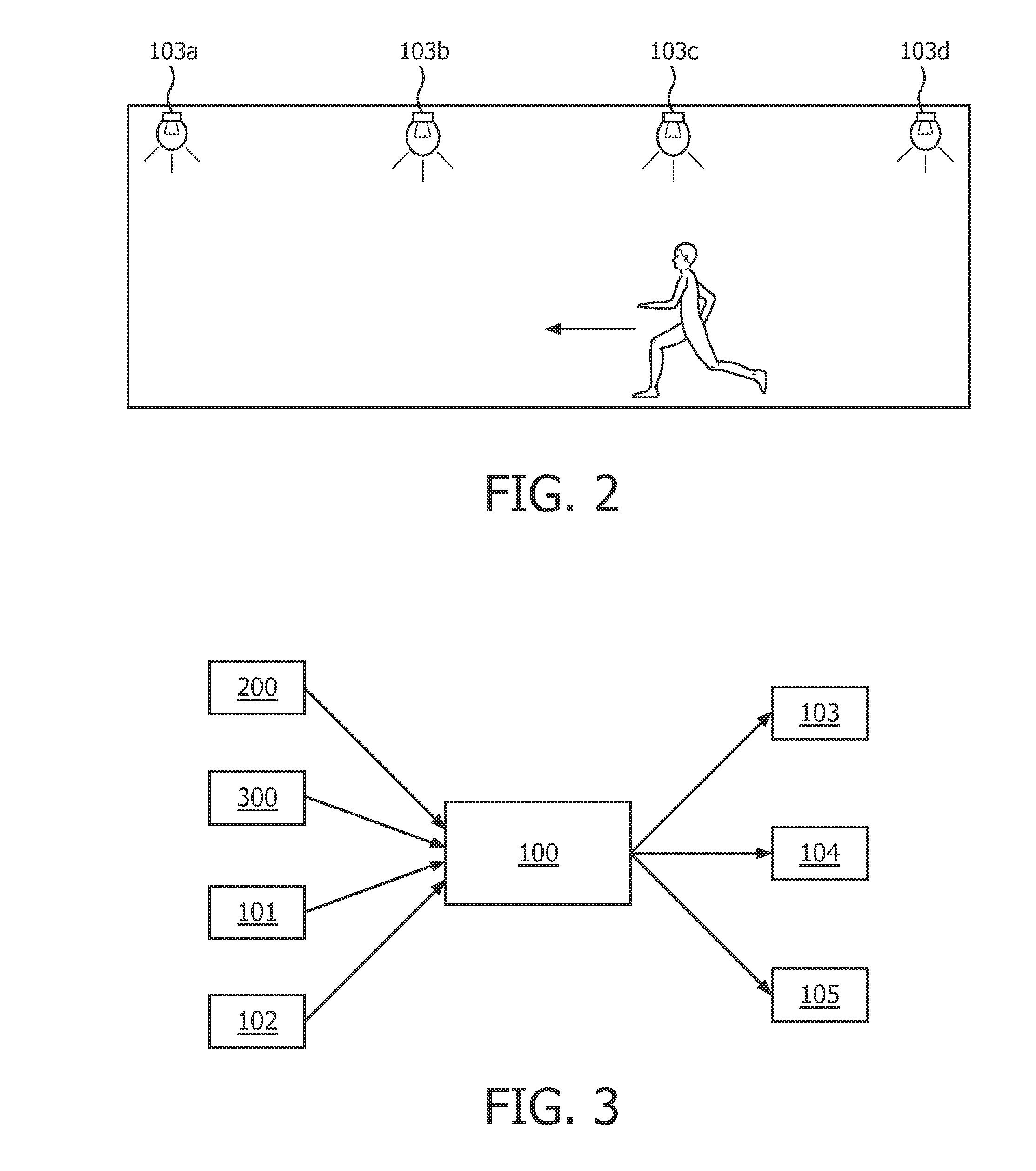[0004]It is therefore an object of the present invention to provide an economic and reliable light
guidance system, wherein an illumination of a person's surroundings is adapted to the requirements of the situation, thus improving orientation.
[0010]In another example, in case of a high-charged auxiliary power supply system and a presence
signal, the light level is increased for a predetermined time period. Thus, the surroundings are well illuminated for a person passing by, if there is enough power available. The predetermined time period may be an
estimation of an average time interval for traversing the illuminated area and approaching the next light unit. It may also be required to maintain the high-level illumination longer in order to make a passing person feeling comfortable and safe.
[0013]In another example, the
control unit is adapted to adjust the light level of the light unit and to adjust a lighting period in dependency of the power value of the auxiliary power supply system. Therefore, not only the intensity level of illumination is adapted to the available power, but also the time interval, for which a higher intensity level is maintained, in order to meet ensuring regulations. For instance, the light level as well as the period for maintaining this light level may be continuously adjustable. Thereby, the performance required by the presence of a person is balanced versus the given condition of the power value and the needs can be encountered in an optimized fashion. To further save energy, the light unit may be controlled to switch repeatedly between a
high intensity level and a low intensity level with a relatively high predetermined frequency, provided that the norms allow such switching. This blinking mode will reduce the consumed power and thus lengthen a possible illumination period.
[0016]Preferably, a light guidance system according to an embodiment of the present invention also comprises at least one presence sensor or a presence
sensor array adapted to detect the presence of a person and, in case of presence detection, to provide the presence
signal to the
control unit. By only transmitting a presence signal to the control unit in case of a person being detected, unnecessary information and network flooding is avoided. This is of particular importance, if low data-rate networks are used for
data transmission. The signals may be sent via a wired or
wireless network or a combination of both. Preferably, each light unit may be provided with its own presence sensor, so that the assignment of the presence signal to a particular light unit may already be determined by the sending presence signal. For this, the presence signal may contain an identification code of the presence sensor or of the light unit. Alternatively, a presence sensor is assigned to several light units and the closest light unit has to be determined by estimating a distance of a person to each light unit. In this case, the presence signal may comprise only an identity of the closest light unit. Additionally, a time stamp may be determined for each presence signal. Alternatively, a presence sensor is assigned to several lighting units.
[0021]In addition, the control unit may be adapted to receive all presence signals of the light guidance system and to display the location of persons corresponding to the presence signals on a screen. The control unit is possibly located in a central and easily accessible place of the premises and can be realized as a computer. Thus, a central computer may locate and display all presence signals on a screen as a
list or on a
layout. If the system is used as a rescue aiding system, this facilitates the finding and saving of people for the rescue service. Alternatively, the control unit may be located outside of the premises, e.g. directly at a rescue service, in order to avoid the control unit being damaged and the presence information being lost in case of a fire or the like.
[0023]In another embodiment, the control unit is adapted to control the light unit that is subsequent on a corridor, path or escape
route to the light unit closest to a detected person, to emit light at high level, if this light unit has sufficient power available. Thereby, a fleeing person is guided along the escape
route in direction of the
emergency exit by switching already the next light unit to high level, which is the next to be passed on the escape
route. The person can thus follow the light units of
high intensity and easily find his direction. If preferred, not only the next light unit but also one or more subsequent light units may be started to emit light at high level, showing the preferred escape route. Moreover, the
lighting system may be linked to a
Building Management System. This allows to adapt a preferred escape route based on information of the
Building Management System. In a more general light guidance system, increasing the light level of the next light unit together with the level of a
first light unit, where a person is detected, may make a passerby feel at ease. Also in this case, it may be required to take the power value into account.
 Login to View More
Login to View More  Login to View More
Login to View More 


